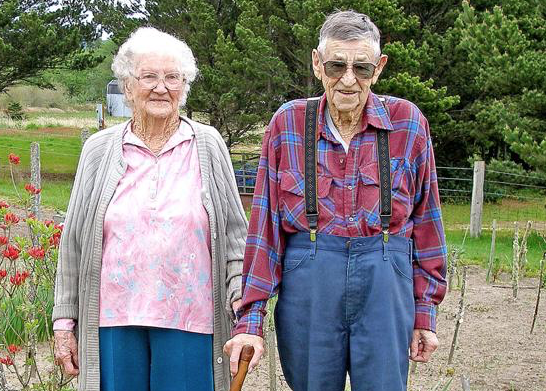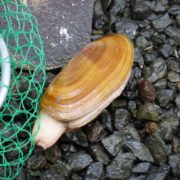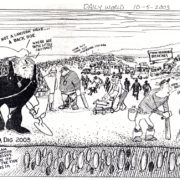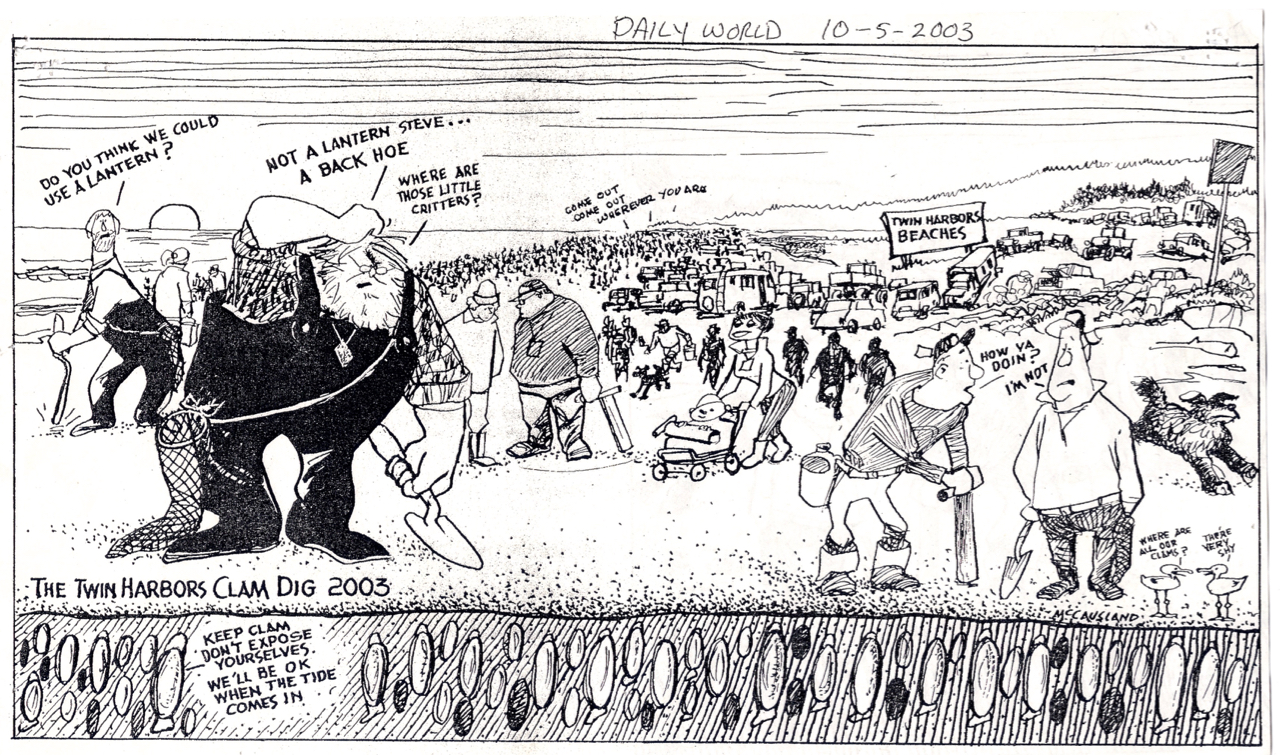
Vern and Ella Worthington, 2007, courtesy Chinook Observer
Ella and Vernon Worthington passed away not that long ago. They were both over 100 years old. The frugal dairy farmers managed to save a million dollars and left generous bequests to ocean environmental organizations. They grew up and married on the Long Beach peninsula, home to great razor clam beaches, and their lives were unavoidably involved with razor clams.
Ella recalled how razor clamming was essential for survival in a May 14, 2018 story in the Chinook Observer: “There were no jobs in the 1920s and 1930s,” Ella said. “We worked in the cranberry bogs, dug razor clams, and Vern worked on the oyster beds and I worked in the steam canneries. We didn’t have time to feel sorry because we were poor. We were too busy and having too much fun with our friends.”
Ella moved to the Peninsula from West Virginia when she was five years old, the ninth of 10 children. She dug “hundreds of clams” before going to school each morning.
Said Kolb [a relative], “Aunt Ella once told me she had dug over two tons of clams in her day. I remember going clamming with her when I was a kid. She always dug in the surf and, man! Was she quick! She’d have her limit before most of us had our first clam!”
Read the full story in the Chinook Observer here.
 A new bill has been prefiled for the upcoming legislative session. The 105-day session begins Jan. 14. If passed, the razor clam, Siliqua patula, would join the ranks of the American goldfish, Walla Walla sweet onion, green darner dragonfly, and the orca as a state symbol.
A new bill has been prefiled for the upcoming legislative session. The 105-day session begins Jan. 14. If passed, the razor clam, Siliqua patula, would join the ranks of the American goldfish, Walla Walla sweet onion, green darner dragonfly, and the orca as a state symbol.





